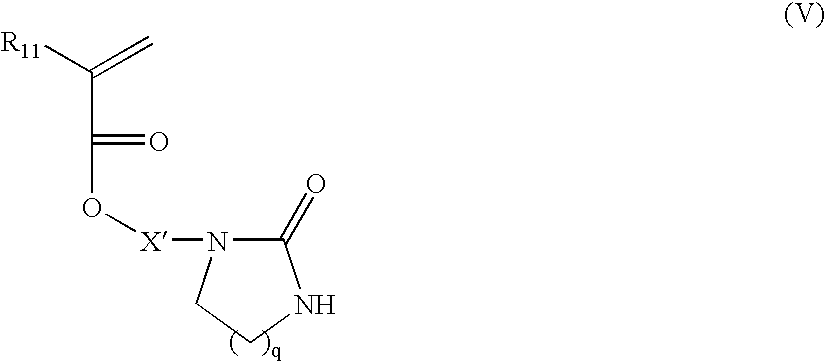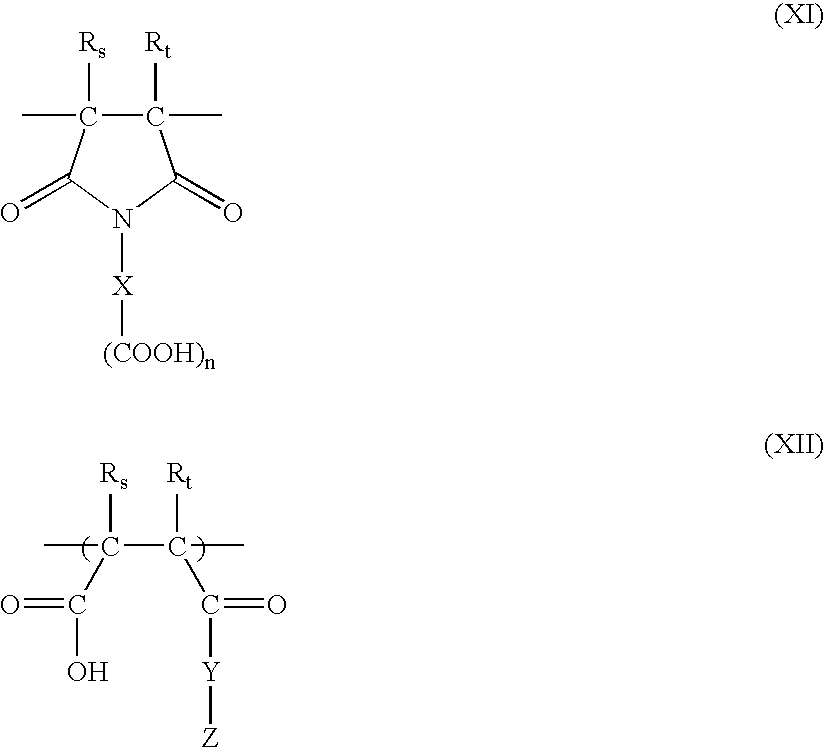Use of highly alkaline developer regenerator composition
a developer and composition technology, applied in the field of lithography, can solve the problems of not “replace” or restore developer activity, inability to use inorganic fluoride (“pf”) treatment, and aluminum silicate (sludge) to build up in the processor, etc., to achieve suppress or reduce the conductivity of the developer, restore the developer activity, and improve the effect of conductivity
- Summary
- Abstract
- Description
- Claims
- Application Information
AI Technical Summary
Benefits of technology
Problems solved by technology
Method used
Image
Examples
invention example 1
[0185]A developer composition and regenerator composition useful in the practice of this invention were formulated with the components shown in TABLE I below.
TABLE IDeveloperRegeneratorCompositionCompositionComponents(parts)(parts)Demineralized water771.58807.58METSO ® PENTABEAD 20 (sodium67.1067.10metasilicate, 58.4% solids)Triton ® CF-32 (95% solids)0.720.72Glycerin (99.5% solids)66.0030.00Fastusol Blue 79L solution00.005Texapon ® 842 (40.7% solids)30.8030.80Petro AA (51% solids)62.7062.70Ethylenediaminetetraaminoacetic acid1.101.10(EDTA), sodium salt (83.6% solids)1000.001000.00Conductivity52.158.7PH13.213.3Specific gravity at 22° C.1.0741.066Etching Dip Test7 minutes, 104 minutes, 45secondssecondsFoaming14 minutes12 minutes
[0186]The results in Invention Example 1 indicate that both the developer composition and regenerator composition provided improved aluminum-containing substrate etch resistance as shown in the Etching Dip Test. The same test carried out using the commercially...
invention example 2
[0190]The developer composition and regenerator composition described in Example 2 and three other regenerator compositions from which glycerin was omitted, were evaluated for several properties. The components of each composition are shown in TABLE II below.
TABLE IIComparativeComparativeComparativeRegeneratorRegeneratorRegeneratorInventionInventionComposition AComposition BComposition CDeveloperRegeneratorNo GlycerinNo Glycerin 95%No GlycerinCompositionComposition100% silicateSilicate90% SilicateDemineralized water771.580807.58837.58840.93844.28METSO ® 520 (sodium metasilicate,67.1067.1067.1063.7560.4058.4% solids)Triton ® CF-32 (95% solids)0.720.720.720.720.72Glycerin (99.5% solids)66.0030.00000Texapon ® 842 (40.7% solids)30.8030.8030.8030.8030.80Petro AA (51% solids)62.7062.7062.7062.7062.70EDTA Tetra Sodium Salt (83.6% solids)1.101.101.101.101.10Fastusol Blue 79L00.0050.0050.0050.0051000.001000.001000.001000.001000.00Conductivity - Meter 1052.658.764.562.660.6pH - Meter 1013.513...
PUM
| Property | Measurement | Unit |
|---|---|---|
| conductivity | aaaaa | aaaaa |
| conductivity | aaaaa | aaaaa |
| conductivity | aaaaa | aaaaa |
Abstract
Description
Claims
Application Information
 Login to View More
Login to View More - R&D
- Intellectual Property
- Life Sciences
- Materials
- Tech Scout
- Unparalleled Data Quality
- Higher Quality Content
- 60% Fewer Hallucinations
Browse by: Latest US Patents, China's latest patents, Technical Efficacy Thesaurus, Application Domain, Technology Topic, Popular Technical Reports.
© 2025 PatSnap. All rights reserved.Legal|Privacy policy|Modern Slavery Act Transparency Statement|Sitemap|About US| Contact US: help@patsnap.com



